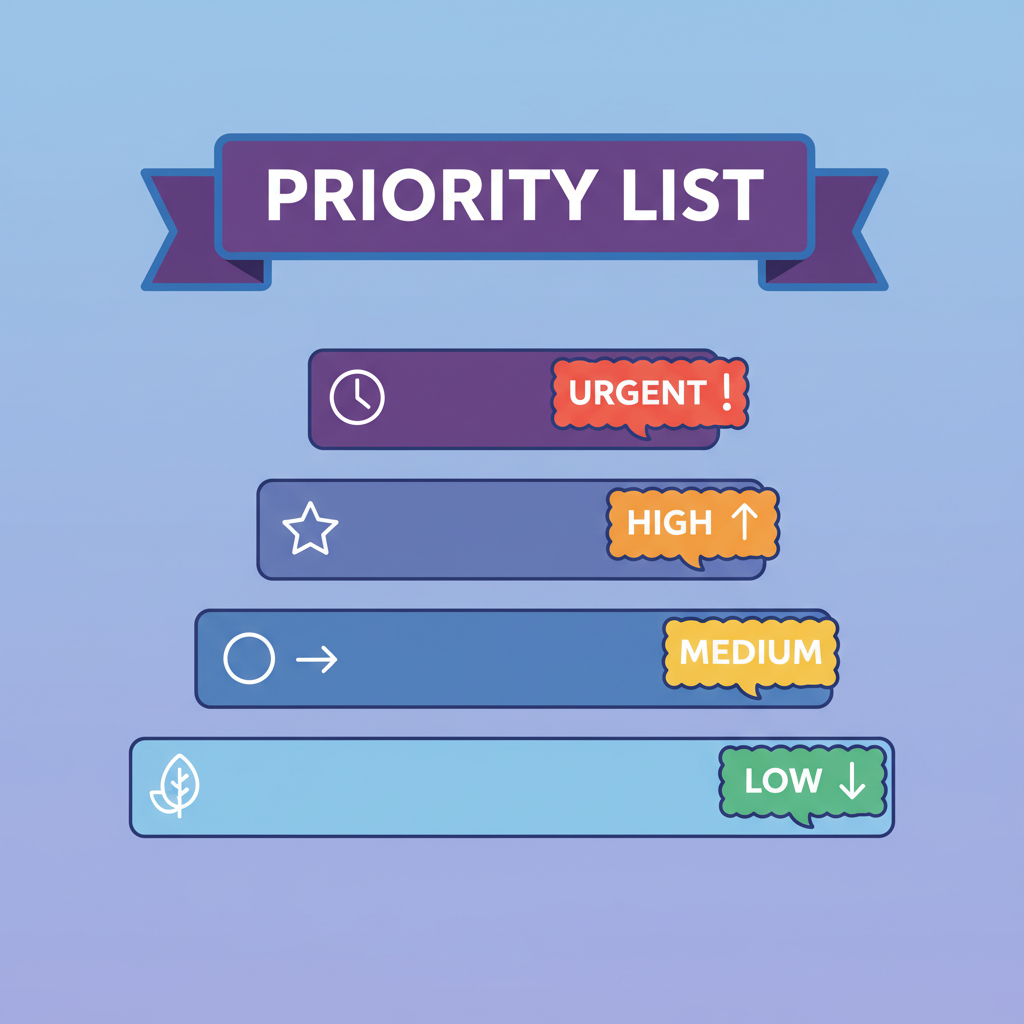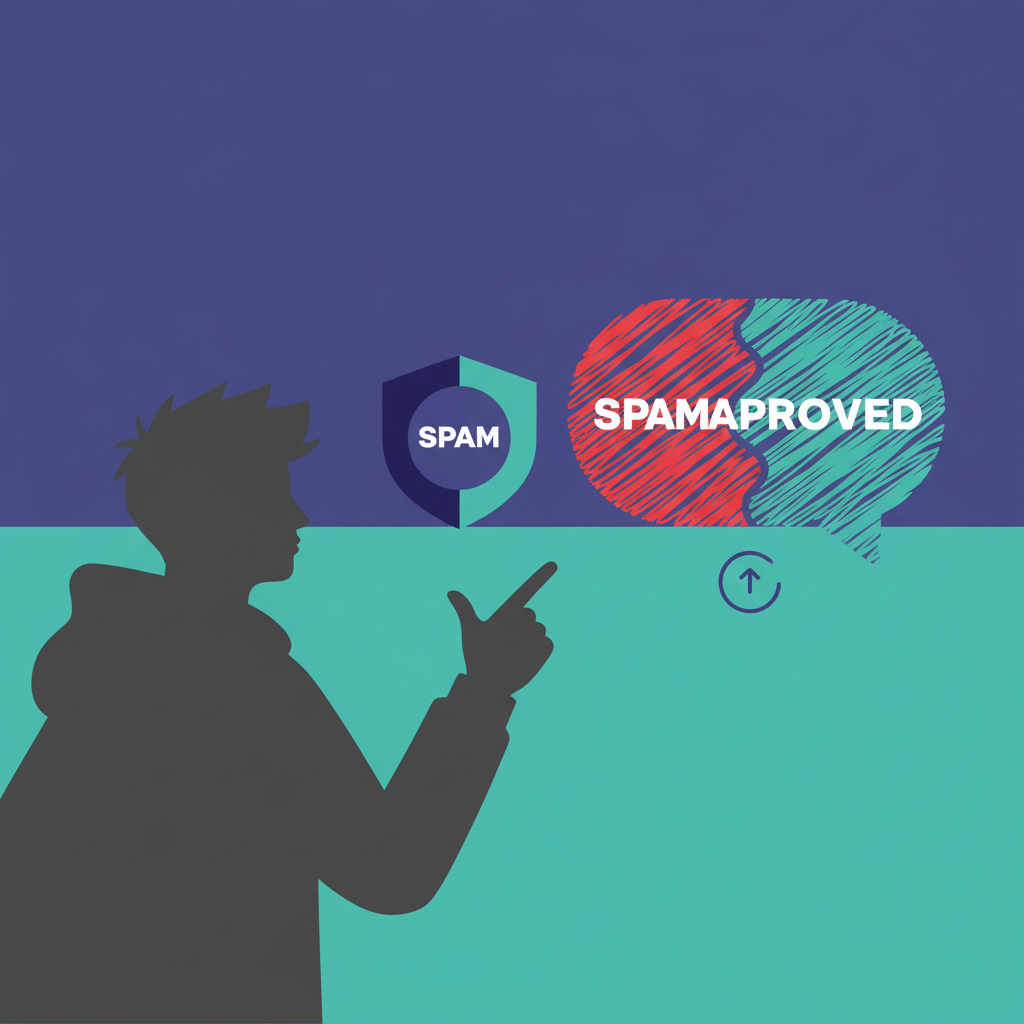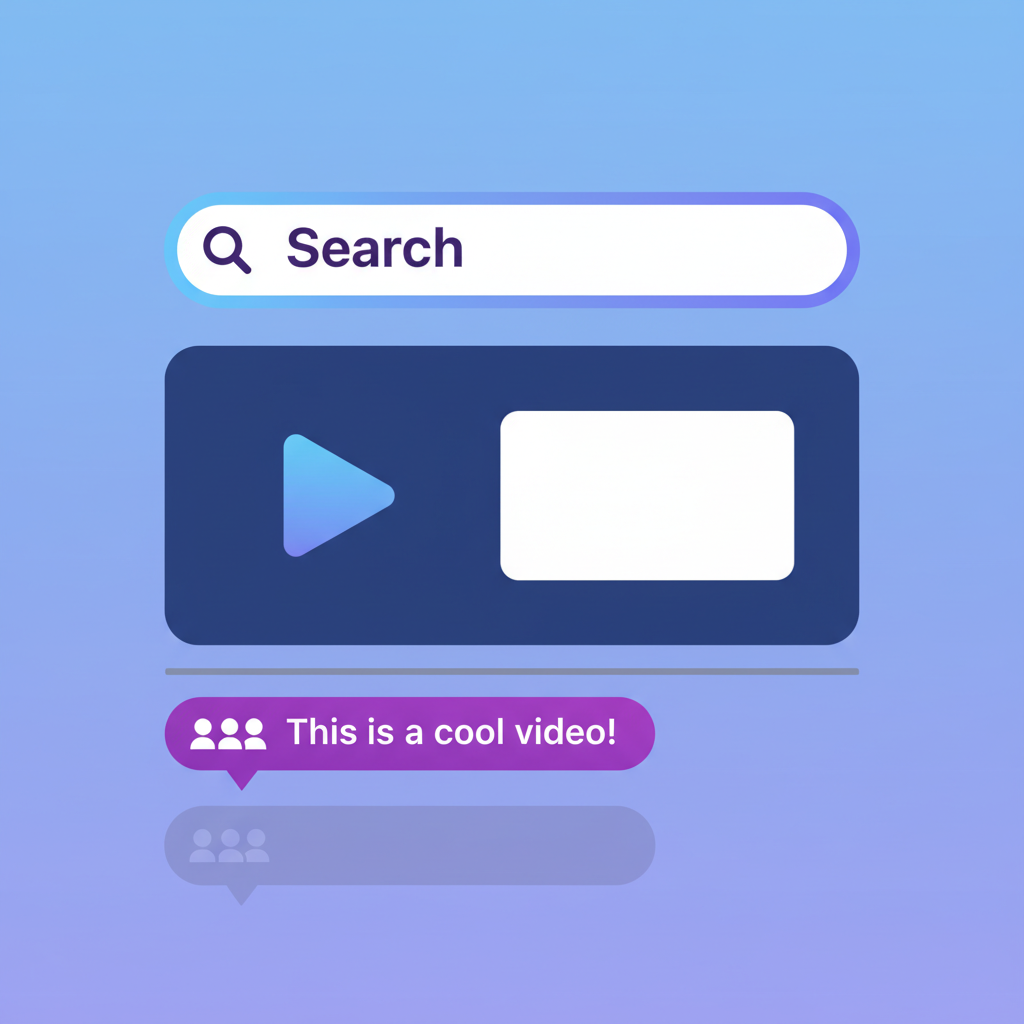Managing hundreds or thousands of YouTube comments feels like drinking from a fire hose. Important questions get buried, spam floods in, and genuinely engaged fans get lost in the noise. YouTube Studio's basic tools aren't built for serious comment management: they're built for casual viewing.
In this comprehensive guide, you'll learn proven strategies to organize YouTube comments using filtering, sorting, tagging, automation, and dedicated management tools. By the end, you'll have a system that turns comment chaos into strategic engagement opportunities.
Why YouTube Comment Organization Matters
Disorganized comment sections hurt your channel in ways you might not realize:
- Missed opportunities: Important questions, collaboration offers, and feedback get buried
- Slower responses: Takes hours to find comments worth replying to
- Spam overwhelm: Legitimate comments drown in bot noise
- Lower engagement: When creators can't keep up, they stop responding (killing future engagement)
- Algorithm penalties: YouTube rewards active engagement. Ignoring comments hurts recommendations.
- Viewer frustration: Fans who don't get responses eventually stop commenting
Organized comment management solves all of this. Let's break down how.
The 5 Pillars of YouTube Comment Organization
Effective comment organization relies on five core systems working together:
1. Filtering: Show Only What Matters
Filters let you hide noise and surface valuable comments. Essential filters include:
- By sentiment: Show only positive, negative, or neutral comments
- By keyword: Find comments containing specific words or phrases
- By date range: Focus on comments from the last 24 hours, week, or month
- By video: Organize comments by which video they're on
- By engagement: Show comments with the most likes or replies
- By user: See all comments from a specific viewer
- By status: Filter by replied, unreplied, or flagged comments
- By spam/moderation: Separate legitimate comments from potential spam
YouTube Studio offers basic filtering (by video, publish date), but advanced tools like CommentShark provide keyword, sentiment, and engagement-based filtering that YouTube lacks.
2. Sorting: Prioritize What Needs Attention
Sorting determines which comments appear first. Effective sorting strategies:
- Newest first: Catch fresh comments quickly (default in YouTube Studio)
- Oldest first: Clear out backlog of unanswered comments
- Most likes: Prioritize popular comments viewers care about
- Most replies: Join active discussions already happening
- Unreplied first: Focus on comments that haven't gotten responses yet
- Questions first: Answer inquiries before thanking compliments
- By engagement score: Surface comments likely to drive more interaction
Different goals require different sorts. Replying to new uploads? Sort by newest. Catching up on backlog? Sort by oldest unreplied.
3. Searching: Find Specific Comments Instantly
Search is critical when you need to locate:
- All comments mentioning a product name
- Comments from a specific user
- Feedback containing specific keywords
- Comments with timestamps or video references
- Questions about a particular topic
YouTube Studio's search is limited to single videos. Tools like CommentShark's Comment Searcher let you search across your entire channel or even other creators' videos.
4. Tagging/Labeling: Categorize for Future Action
Tags let you categorize comments for batch processing:
- "Needs reply" - Comments requiring responses
- "Product question" - Inquiries about what you sell
- "Video idea" - Suggestions for future content
- "Collaboration" - Partnership or business inquiries
- "Fan appreciation" - Compliments worth screenshot/sharing
- "Constructive feedback" - Critiques to consider for improvement
- "Spam/review" - Comments flagged for moderation
This system lets you batch-process similar comments (e.g., answer all product questions in one session).
5. Automation: Let Systems Handle Repetition
Automation doesn't replace you: it handles repetitive tasks:
- Auto-reply to common questions: Use templates for FAQ
- Auto-filter spam: Hide known spam patterns automatically
- Auto-tag by keyword: Comments with "buy" get tagged "product question"
- Auto-moderate: Block profanity or harmful content
- Auto-notify: Get alerts when specific keywords appear
Tools like CommentShark's Auto-Reply Rules combine all five pillars (filtering, sorting, searching, tagging, and automation) into one unified system.

Workflow diagram showing comment organization process from filtering to response
Step-by-Step: Build Your Comment Organization System
Step 1: Choose Your Comment Management Tool
You have three options:
- YouTube Studio (free, limited): Basic filtering by video and date. No advanced search, tagging, or automation.
- CommentShark (free + paid tiers): Full filtering, sorting, searching, tagging, and automation. Built specifically for YouTube comment management.
- Custom API solution (advanced): Build your own system using YouTube Data API. Requires coding knowledge.
For most creators, CommentShark offers the best balance of power and ease-of-use without requiring technical skills.
Step 2: Set Up Your Filtering System
Create saved filters for your most common use cases:
Filter: "Needs Reply Today"
- Posted in last 24 hours
- Not yet replied
- Not spam
- Sort by oldest first
Filter: "Product Questions"
- Contains keywords: "buy", "price", "link", "purchase"
- Sort by most likes (popular questions first)
Filter: "Video Ideas"
- Contains: "make a video", "tutorial on", "can you cover"
- Sort by newest
Filter: "Top Fan Engagement"
- From top 20 commenters
- Sort by newest
- Tag: "Priority reply"
Save these filters so you can switch between them in one click instead of re-creating them daily.
Step 3: Establish a Daily Comment Workflow
Consistency beats sporadic effort. Build a daily routine:
- Morning (10 minutes): Filter by "Needs Reply Today" → Respond to new comments from overnight
- Midday (5 minutes): Check "Product Questions" filter → Answer inquiries, link to products
- Evening (10 minutes): Filter by "Video Ideas" → Acknowledge suggestions, add to content calendar
- Weekly (30 minutes): Review "Spam/review" tagged comments → Approve legitimate, delete spam
This 25-minute-per-day system keeps you on top of comments without burning hours.
Step 4: Automate Repetitive Replies
Use auto-reply rules for common patterns:
- Rule: Equipment questions → Trigger: "camera", "mic", "gear" → Reply: Template with equipment list link
- Rule: Thank yous → Trigger: "thanks", "love your videos" → Reply: "Appreciate you! 💙"
- Rule: Timestamps → Trigger: "where is", "which part" → Reply: Template with timestamp navigation help
- Rule: Product links → Trigger: "buy", "link" → Reply: Template with affiliate link + discount code
This handles 60-70% of comments automatically, leaving you time for meaningful, personalized replies to the rest.
Step 5: Review and Refine Monthly
At the end of each month, analyze what worked:
- Which filters saved the most time?
- Are auto-reply rules hitting the mark or sounding robotic?
- Which tags are useful vs. unused?
- Are there new comment patterns that need filters or rules?
- How is response time trending? (Faster = better engagement)
Refine your system based on data, not guesses.
Advanced Comment Organization Strategies
Strategy 1: Create a "Triage" System
Not all comments deserve equal attention. Triage them by priority:
Priority 1 (Respond within 1 hour):
- Business inquiries, collaboration offers
- Top commenter engagement
- Negative feedback needing damage control
Priority 2 (Respond within 24 hours):
- Questions about your content
- Thoughtful, detailed comments
- Product/service inquiries
Priority 3 (Respond within 1 week):
- General compliments ("Great video!")
- Simple thanks
- Off-topic but harmless comments
Priority 4 (Optional):
- One-word comments ("Nice")
- Emojis only
- Generic praise
Use tags to mark priority levels, then work through them systematically.
Strategy 2: Batch Similar Comments
Instead of replying one-by-one, group similar comments:
- Answer all equipment questions in one session (use same template, tweak as needed)
- Reply to all compliments together
- Process all video ideas at once and update your content calendar
This "batch processing" is 3-5x faster than scattered replies throughout the day.
Strategy 3: Use Folders/Labels for Long-Term Storage
Create virtual "folders" for comments you want to revisit:
- "Testimonials" - Glowing reviews to screenshot and share
- "Feature requests" - Ideas to implement in future products
- "Collaborations" - Partnership inquiries to follow up on
- "Content ideas" - Video suggestions to reference later
- "Data/research" - Viewer insights useful for content planning
This turns your comment section into a searchable database of valuable insights.
Strategy 4: Archive Old, Resolved Comments
Once a comment is replied to and resolved, archive it to keep your active queue clean. Most tools support an "archive" function that hides resolved comments from default views but keeps them searchable.
This prevents you from re-reading the same 1,000 comments every time you check your dashboard.

Priority-based comment triage system with color-coded levels
Handling High-Volume Comment Sections (1,000+ Comments/Video)
When you're drowning in comments, organization becomes survival:
1. Focus on First 24 Hours Only
Comments matter most for the algorithm in the first 24-48 hours. Filter by "posted in last 24 hours" and ignore older comments unless they're high-priority.
2. Automate 80%, Personalize 20%
Use auto-reply templates for generic comments, but manually reply to:
- Top commenters
- Detailed, thoughtful comments
- Questions templates can't answer
- Negative feedback requiring nuance
3. Delegate or Hire Help
At scale, consider delegating comment management:
- Hire a virtual assistant to handle tier 2/3 priority comments
- Give a trusted community member moderator permissions
- Use CommentShark's team features to assign comment responsibility
Your time is better spent creating content, not answering the same question 100 times.
Comment Organization Tools Comparison
- YouTube Studio (Free):
✅ Basic filtering by video, date
❌ No keyword search across videos
❌ No tagging or labeling
❌ No automation
❌ No sentiment analysis - CommentShark (Free + Paid):
✅ Advanced filtering (sentiment, keywords, engagement)
✅ Cross-video search
✅ Tagging and folder system
✅ Auto-reply rules and templates
✅ Sentiment analysis
✅ Top commenter tracking
✅ Export and analytics - Custom API Solution (Free if you code):
✅ Full control and customization
❌ Requires coding knowledge
❌ Time-intensive to build
❌ Maintenance required
❌ API quotas and rate limits
For most creators, CommentShark offers the best feature-to-effort ratio without requiring technical skills or hours of manual work.
Common Comment Organization Mistakes
- ❌ Checking comments randomly throughout the day: Set specific times instead
- ❌ Replying in order they appear: Prioritize by importance, not chronology
- ❌ Not using filters: Wasting time scrolling instead of filtering
- ❌ Over-automating: Some comments need personal responses
- ❌ Ignoring old comments: Backlog creates guilt and overwhelm (clear it systematically)
- ❌ Not tracking metrics: Monitor reply time, engagement rate, and comment quality trends
- ❌ Using one system for all videos: Different video types need different approaches (tutorials vs. vlogs)
Metrics to Track (Proof Your System Works)
- Average reply time: How fast do you respond? (Faster = better engagement)
- Reply rate: % of comments you reply to (aim for 50%+ on new videos)
- Comment growth: Are you getting more comments over time? (Good organization encourages more engagement)
- Sentiment trend: Are comments becoming more positive? (Sign of strong community)
- Time spent managing: Hours per week on comments (should decrease with good organization)
- Engagement per reply: Do your replies spark follow-up comments? (Quality indicator)
Track these monthly. If time spent is increasing while reply rate is decreasing, your system needs refinement.
Turn Comment Chaos Into Strategic Advantage
Organized comment management isn't about control: it's about maximizing the value of every viewer interaction. The difference between channels that scale engagement and channels that drown in comments comes down to systems.
Start with the five pillars: filtering, sorting, searching, tagging, and automation. Build a daily workflow. Refine monthly. And use tools designed for the job (don't fight YouTube Studio's limitations when better solutions exist).
Your comment section is one of your most valuable assets. Organize it like one.
Stop wrestling with disorganized comments. Try CommentShark's complete comment management system free (no credit card required).
Organize Comments Now

